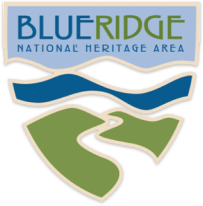
Lottie Queen Stamper
Lottie Queen Stamper (1907-1987) was a master artist in the tradition of Cherokee basket weaving. Her life’s work encompassed many facets of Cherokee basketry, and of the very nature of being a traditional craftsperson. Stamper’s basket making had important economic and functional purposes, as well as being expressions of her tribe’s and her own aesthetics. She brought together varied channels of influence within the tradition, learning directly from her family and other community members, while supplementing her learning with study of historic basketry. Her techniques and media were also varied, and she was known for her work in rivercane, white oak, honeysuckle, and pine needles, and her central role in revitalizing the art of doubleweave basketry in her community.
Raised in the Soco section of the Qualla Boundary, Stamper’s first teacher was her mother, Mary Queen, who made white oak baskets to supplement the farming family’s livelihood, and rigorously instructed her daughter in the techniques. Later, as a young married woman living in the Painttown community, Stamper learned rivercane basketry and the use of native dyes from her mother-in-law, Sally Ann Stamper, and sister-in-law, Lizzie Youngbird.
Stamper went on to become a respected teacher of basket weaving. In the 1930s and ‘40s, she dedicated herself to learning the Cherokee doubleweave technique. She was briefly instructed by the elderly basket maker Rebecca Toineeta, but Stamper’s real breakthrough was seeing a photograph of an 18th-century basket in the collection of the British Museum. After arduous study and calculation Stamper was able to decipher the historic craftsperson’s technique, to reproduce it herself, and in time to teach it to others. She is often credited with the reintroduction of doubleweave tradition to Cherokee arts. There is some difference of opinion as to whether the technique was fully lost and Stamper rediscovered it, or whether her efforts would more accurately be described as strengthening and revitalizing a flagging art. Whichever interpretation is correct, Lottie Stamper’s name is justly associated with a modern flourishing of Cherokee doubleweave.
Stamper spent decades teaching and demonstrating basketry, both at home in Western North Carolina, and elsewhere in the South. In the early 1960s she spent time in Mississippi teaching for the Choctaw Craft Association. In 1952, while still only in her forties, she became the first Native American artist to receive a lifetime achievement award from the Southern Highland Handicraft Guild. By the time of her passing in 1987, Lottie Queen Stamper had made thousands of baskets, and a crucial, lasting contribution to the vitality of Cherokee and Appalachian craft.


